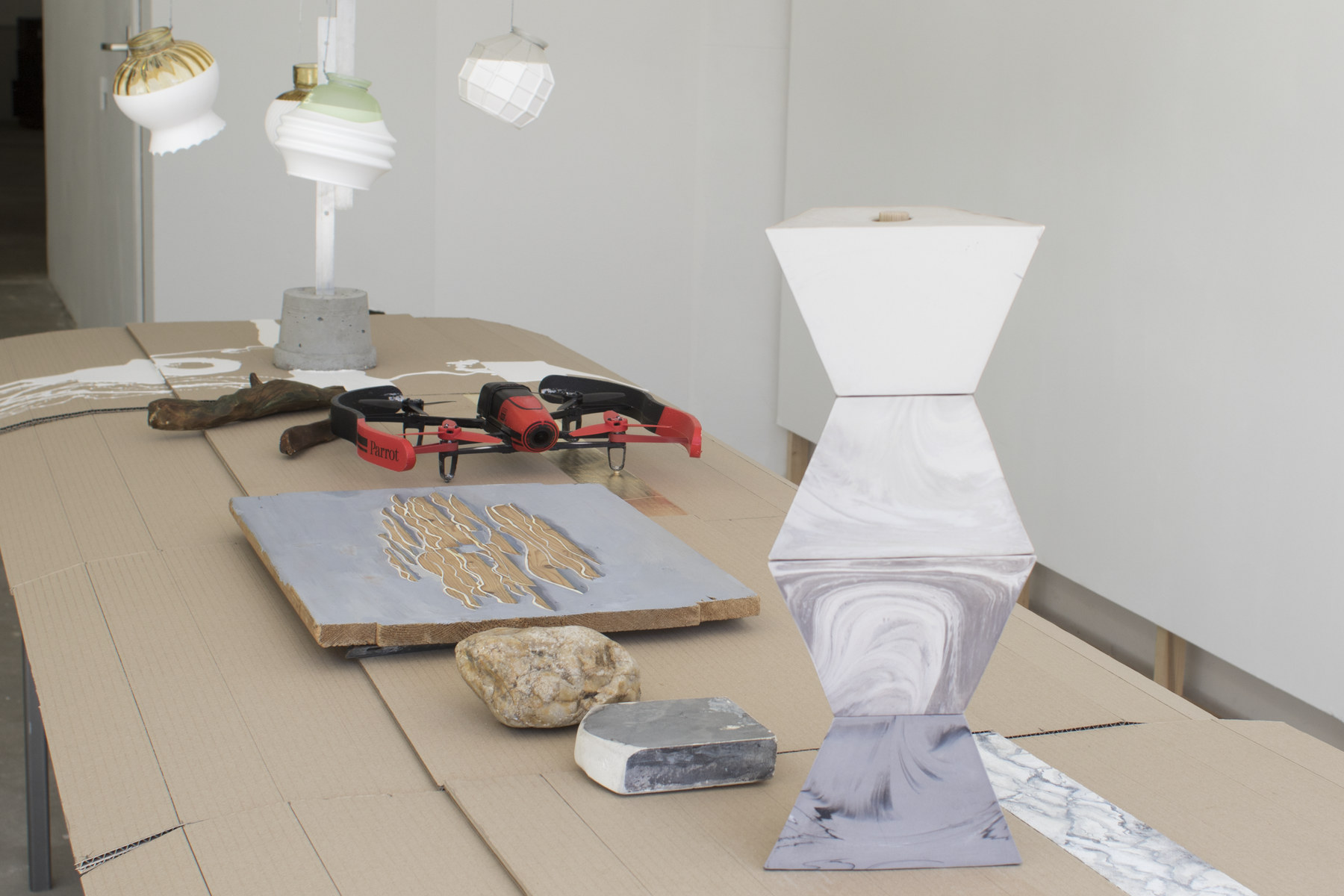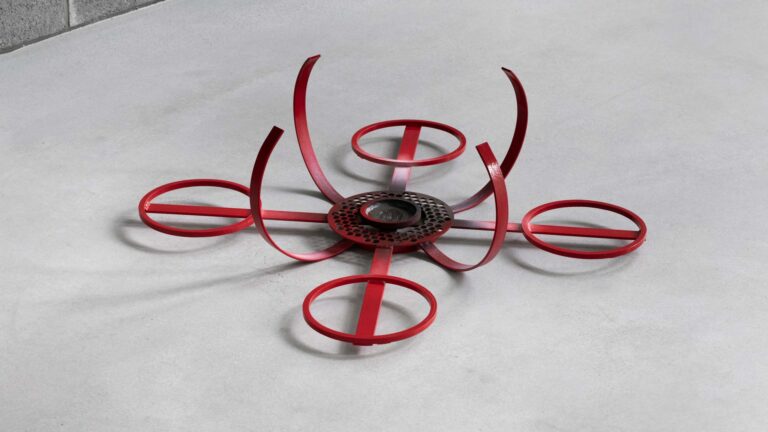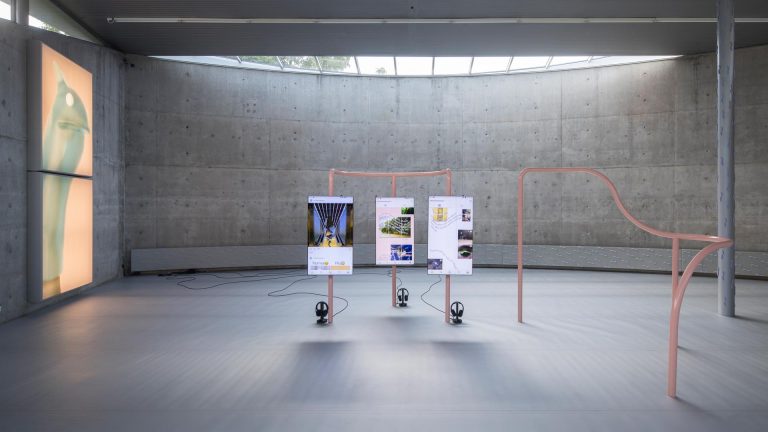Artists: Alice De Mont, Elise Eeraerts, Odilon Pain, Emmanuelle Quertain, Dimitri Vangrunderbeek
Exhibition title: Still life with Stone and Stone, Gold, Branch, Dippings, Camouflage, Surfaces, Ripple, Drone, The Others & The Rest
Venue: The Stable, Waregem, Belgium
Date: May 6 – June 17, 2017
Photography: Alice De Mont, Cedric Verhelst, all images copyright and courtesy of the artists and The Stable
Note: Exhibition floor plan can be found here
Still life with Stone and Stone, Gold, Branch, Dippings, Camouflage, Surfaces, Ripple, Drone, The Others & The Rest is both the title of the exhibition and the still life that is shown. The still life contains work by various artists and was compiled by Alice De Mont. The objects of the still life contain a “misleading layer” or a trompe-l’oeil effect, which hides the true nature of the object. In the work of De Mont, the creation of a still life serves as a specific method to gather objects. The title consists of the name of each object present in the still life. The other works in the exhibition also reflect their specific nature and state of being. Both camouflage, direction de regard and denkplan already existed in a different form or shape, before being presented as in the exhibition.
The drone, a participant of the still life, has an active role. At certain moments, the drone will take off and fly around to register the still life. Eventually, the drone sets a course to record and gradually erase denkplan. The rotating propellers create a wind that blows away the crushed plaster drawing so that it is faded away.
Ripple 2013, a painting by Odilon Pain, is part of the still life and represents à detail of an installation. The painting serves as a substitute of the installation that used to be in Odilon’s possession. Surfaces (4 modular units, vertical), 2017, a work by Elise Eeraerts consist of four piled porcelain sculptures that are part of the still life.
Emmanuelle Quertain, Camouflage, direction de regard, May, 2017. In this exhibition, for the first time, the erasure of two paintings is shown. Both paintings made in 2011, are based on photos from American journalism, documenting the so called “Arab Spring” in a romantic way. Emmanuelle Quertain attached the paintings to the wall and overpainted them, as well as part of the wall, with a color slightly differing from that of the wall. This is causing a camouflage, the paintings are incorporated into the wall and the architecture of the building. Two sections in the paintings are not overpainted, as such they attract attention and determinate the direction of view.
Alice De Mont, Denkplan is a drawing made out of crushed plaster. In 2011 Alice De Mont started a collection of plaster objects (Objects 0,0) used for experiments and try-outs. Ever since these objects travel with her and form the basis of various new productions. Denkplan is a drawing made out of crushed plaster, coming from these objects. This technique is based on the tradition of Tibetan monks and the sand mandala. Making a mandala sometimes takes weeks, after which it is destroyed, as soon as it is finished. The opposition between its swift destruction and intense production shows the relativity of materiality. Alice De Mont’s drawing embodies a similar temporality, once the plaster drawing is finished, it is gradually destroyed by the drone.
Dimitri Vangrunderbeek, Dippings, 2017. Dippings is Part of the Still life in the show. When I dip glass lamp shades in white lacquer, or when I box in hanging lamps with layers of chipboard I make a series out of it to allow me to investigate the variations in their ordinary form. When I push the lamps down into the mass of the lacquer, it is as if I scan the object’s inside and outside by means of the mass. What we see afterwards is the leftover results of an act, but also transformed objects. The series of dippings with white lacquer allow me to make something visible in the object by accentuating the details and the form arising from the shadows on the white lacquer. During the opening of the show the dipping act will be demonstrated, whereby the sculpture is finalized.







































